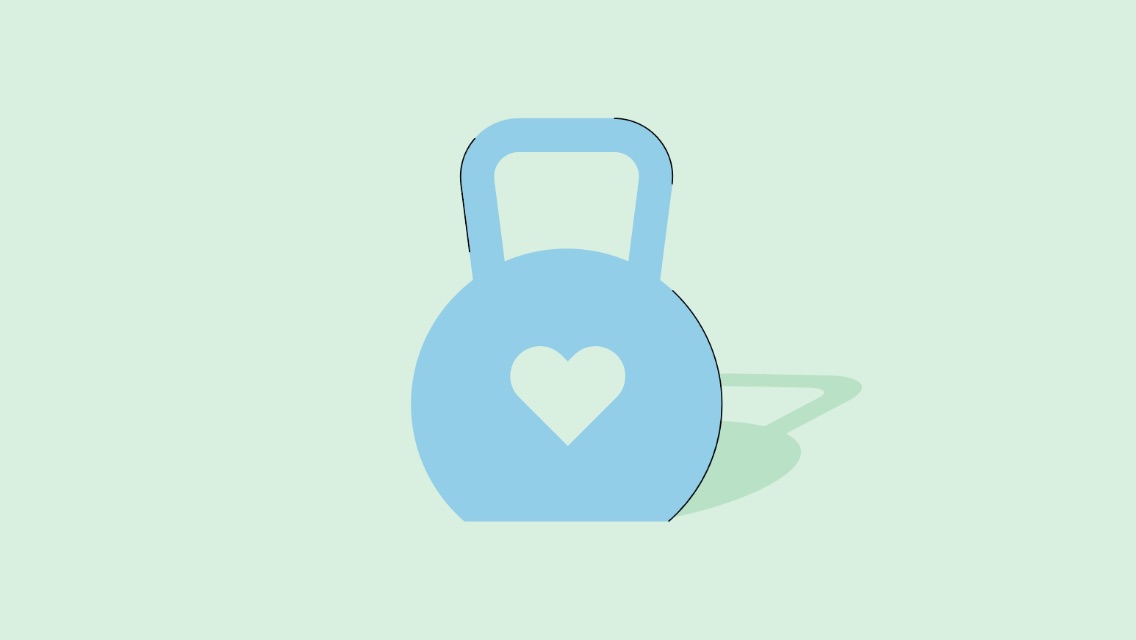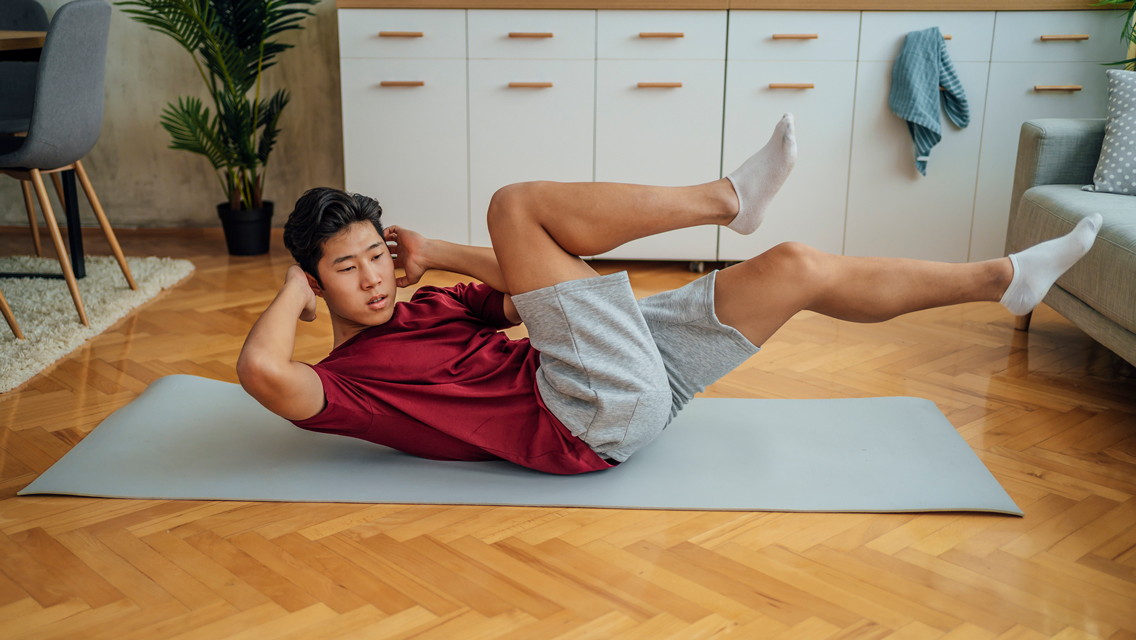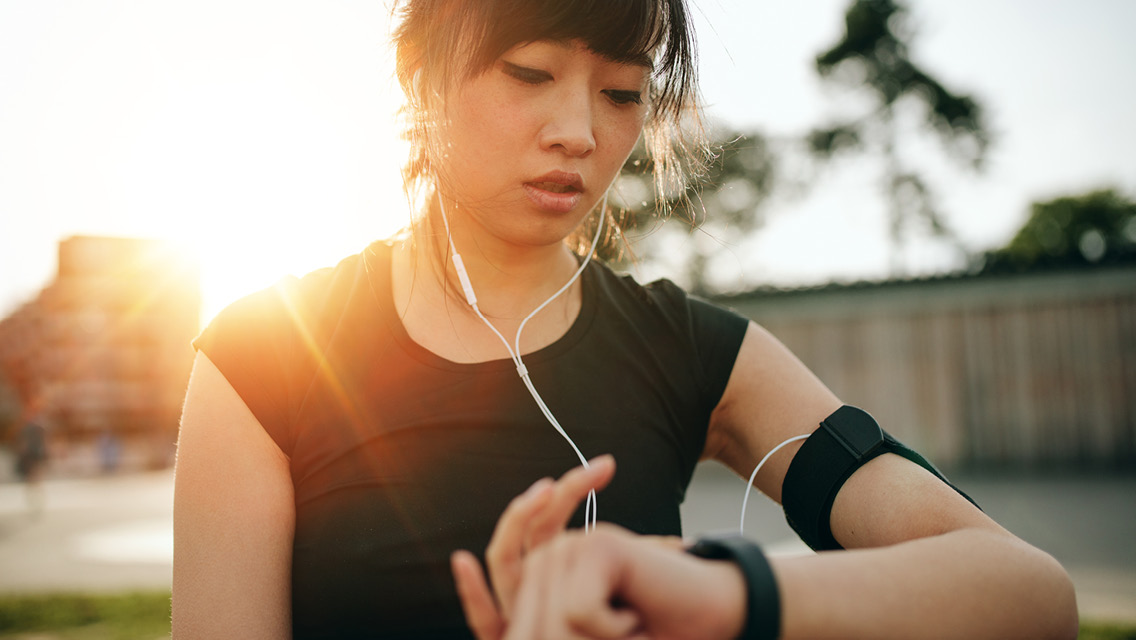Want a stronger heart, a more alert mind and a better sex life? Would you like to be better equipped to combat cancer and cardiovascular disease, fight the common cold, and even heal wounds faster? This may sound like an infomercial for a too-good-to-be-true pill, but, in fact, it’s an invitation to enjoy your body’s amazing ability to heal itself — an ability that is substantially amplified when you make physical activity a part of your daily life.
“There is no medication or nutritional supplement that even comes close to having all of the effects exercise does,” says David C. Nieman, PhD, author of The Exercise-Health Connection: How to Reduce Your Risk of Disease and Other Illnesses by Making Exercise Your Medicine. “It’s truly the best medicine we know of.”
We tend to think of exercise as a preventive measure — something that helps us maintain our general fitness and keep excess weight at bay. But in reality, exercise has a vast range of healing influences on the body — influences that can help reverse negative biochemical trends, while improving our resiliency and immunity at virtually every level of our physiology.
“Yes, exercise builds muscle and bone,” says Michael Roizen, MD, coauthor of You: The Owner’s Manual. “But it also changes the way your genes function, making it less likely that you’ll get cancer, that your arteries will harden or that you’ll suffer from depression.” Better yet, in the event these or other maladies do befall you, there’s evidence that exercise can help you recover from them more easily and successfully.
Good fitness has global healing effects, working simultaneously on multiple systems to improve mental, spiritual and physical health. In fact, exercise aids nearly every system in the body. Since these systems are interconnected, it can be difficult to categorize exercise’s many specific benefits. That’s why, in the interest of giving exercise at least a little more of its considerable due, we’ve collected a top-line summary of just a few of the powerful ways exercise heals. Read on, and then kick your body’s own healing engines into high gear.
1. Cures Cardio Ills
Cardiovascular exercise is not just important for weight control and general fitness. It can significantly lower the risk of death from heart disease (and cancer), according to a 20-year study published in the International Journal of Obesity in August 2005 — even for individuals with a body mass index in the obese range.
Moving your body has profound biochemical and hormonal effects that support cardiovascular healing, including moderating good and bad cholesterol levels — a significant risk factor in coronary heart disease. A 2006 Duke study that examined the effects of exercise on inactive, overweight adults found that, after six months, many of the biological factors putting them at risk for heart disease had reversed or improved.
A 2004 study published in Circulation found that existing arterial damage could be reversed in obese children when they switched to a healthy diet and exercised regularly. And a June 2007 study reported in the Journal of the American College of Cardiology concluded that aerobic exercise can even reverse certain signs of heart failure. Tennis, anyone?
2. Rebuilds Bone and Muscle
Over time, our bone density deteriorates. And for 25 million Americans, most of them women, normal bone loss becomes osteoporosis. Researchers have found that athletes, particularly those engaged in weight-bearing exercise, have greater bone density than their nonactive peers. “It’s a mechanical thing,” says Frank Booth, PhD, a physiology professor at the University of Missouri School of Medicine in Columbia. “When bones sense load, a small electrical signal causes the bone to respond and grow.”
And strength training is beneficial at any age. According to a study published in the Journal of the American Medical Association in 1994, postmenopausal women who did resistance training twice a week for a year avoided loss of bone and even slightly increased their bone density.
It’s vital to build (and rebuild) strong bones and muscle through exercise if you want to enjoy your full vitality and mobility for the long haul. Exercise improves circulation, neurological activity and a variety of biochemical influences that promote healing. Skeletal muscle has the remarkable ability to regenerate itself in response to injury. After initially treating muscle strains with RICE (Rest, Ice, Compression, Elevation), gentle stretching and range-of-motion exercises are key to getting blood to the area and facilitating proper healing — and good fitness and flexibility are key to avoiding and recovering from musculoskeletal injuries of all kinds.
3. Maximizes Mental Acuity
Is it possible that a dedicated triathlon junkie or group-fitness-class enthusiast could stay mentally sharper in her later years precisely because of her devotion to fitness? Maybe so: More and more studies are linking physical wellness to mental health and acuity.
Researchers have found that inactivity puts us at greater risk for age-related dementia, Alzheimer’s and general cognitive decline. Now, more recent research is suggesting that as little as three months of aerobic conditioning can encourage the brain to grow new nerve cells.
In fact, our brains are pliable, flexible and able to develop new neural connections throughout our lives. Exercise increases the uptake of a growth factor in the brain that helps neurons work better, alters genetic patterns and enhances blood flow, which encourages faster firing of neurons and improves our ability to concentrate.
“We know that skeletal muscles talk to the brain,” says Booth. “And we know that the brain talks back.” And the more frequent the “conversation” between muscle and brain, the better both of them work. (For more on brain health, see “Build a Better Brain” in the October 2007 archives.)
4. Dials Down Inflammation
“Inflammation is one of the fundamental underlying causes of almost all chronic disease, including certain cancers,” says Mark Hyman, MD, founder and medical director of the UltraWellness Center in Lennox, Mass., and coauthor of UltraPrevention: The 6-Week Plan That Will Make You Healthy for Life. “It’s the common thread that links together a lot of different problems, and for the first time, science is understanding these underlying roots of illness.”
Inflammation can be measured by the presence of C-reactive protein (CRP), and it flares when your immune system is in a state of chronic reaction. Messenger molecules of the immune system, called cytokines, are fired up by poor diet and a sedentary lifestyle.
A regular, moderate exercise program can sharply reduce CRP, according to a 2002 study published in Epidemiology. And a more recent study from the Columbia University Medical Center more clearly linked the way exercise decreases inflammation, with a reduced risk of atherosclerosis (the buildup of fatty substances in the arteries), a main factor in heart disease.
The key, says Hyman, is getting at the root cause of inflammation: a diet based on processed foods, not enough exercise and too much stress. He recommends upping your exercise quotient and adding de-stressing activities including meditation, tai chi and yoga.
5. Helps Your Hormones
Exercise plays a powerful role in regulating hormone and blood-sugar levels, helping to protect even those people at higher risk of developing hormone-related cancers and type 2 diabetes, and helping those who do develop such diseases to manage them more successfully.
In fact, exercise is one of the cornerstones of diabetes treatment (along with diet and medication), and many with the disease can eliminate their need for medication if they exercise and eat right. In 2001, the U.S. Department of Health and Human Services’s findings from the Diabetes Prevention Program study showed that those with prediabetes, regardless of age or ethnicity, who clean up their diet and increase their level of physical activity, can reduce their risk of developing type 2 diabetes more significantly than those taking medication (58 percent versus 31 percent). The study also found that, by incorporating these changes, those at risk may be able to return their blood glucose to normal levels.
Though the research is in its infancy, there is also a growing body of evidence that indicates that exercise can help curb particular types of hormonally related cancers, especially breast and colon cancers. Melinda L. Irwin, PhD, MPH, an assistant professor in the Department of Epidemiology and Public Health at the Yale School of Medicine, has found an approximate 30 percent reduced risk of breast cancer recurrence and death when women diagnosed with the disease walk two to three hours a week, compared with their inactive peers.
6. Boosts Immunity
“People who exercise regularly have reduced risk of getting the common cold,” says Nieman, who points to studies that indicate people who are physically fit report 60 to 90 percent fewer colds than those who are sedentary. Exercise is thought to support immunity in a variety of ways: by removing bacteria from the lungs through increased respiration and circulation; by flushing carcinogens out of the body with urine and sweat; and by sending a higher concentration of antibodies and white blood cells (the body’s defense cells) around the body at a quicker rate. It’s also possible that the temporary elevation of body temperature may prevent bacterial growth — a sort of self-created fever. Finally, exercise slows down the release of stress-related hormones. Stress increases the chance of illness, and physical activity helps relieve stress in ways that support mind-body and nervous-system health.
7. Supports Mental, Spiritual and Sexual Health
There is nothing fuzzy about the mind-body connection, insists John MacPhail, MA, CRC, LPC, who studied at Harvard’s Mind/Body Medical Institute. “Physical activity has a powerful effect on mental health,” he says. “It improves mood and reduces symptoms of depression.”
By causing changes in the body’s production of norepinephrine, dopamine and serotonin, exercise works as a natural antidepressant. “Exercise produces serotonin,” says MacPhail. “So you’re getting a chemical effect, but you’re getting it with endogenous hormones. Exercise can be as powerful as medication — sometimes more powerful.”
A primary symptom of depression, however, is lack of motivation — and therein lies the difficulty in using exercise to break the cycle of depression. MacPhail suggests building up to the recommended 30 minutes a day by dividing it into very small amounts — say, five to 10 minutes at a time. “The hardest part of exercise is the first five minutes,” he says. “If you can overcome the inertia of just sitting, all kinds of good things start happening.”
Some of those good things occur behind closed doors. A 2003 study published in the Annals of Internal Medicine found that men over 50 who were physically active had a 30 percent lower risk of erectile dysfunction compared with those who were sedentary. Physiologically, improved blood flow is believed to help with erectile dysfunction, but other studies found that exercise also improves self-image, body confidence and hormonal balance — all important components of a fulfilling sex life. A 2000 Harvard University study found that male and female swimmers in their 60s reported sex lives comparable with people in their 40s.
Sexual healing aside, physical activity is a powerful stress-buster. “There’s a lot of research showing that people with more mental stress — from marriage to traffic to jobs to economic pressures — have higher rates of cancer and more hypertension. Humans can’t handle stress at chronic levels,” says Nieman. “Exercise is one method to bring relaxation and relief to a stressed body.”
Even exercisers who can’t eliminate their sources of stress seem to manage it better. “They suffer fewer negative effects because of exercise’s influence on stress hormones,” he adds. Mind-body exercise, including tai chi and yoga, has been shown to have measurable effects on blood pressure and one’s perception of stress. (For more on the mind-body connection, see “Mind-Body Synergy” in the November 2006.)
Exercise can also help break the cycle of obsessive worrying by redirecting our emotional, psychic and physical energy, says Marc Siegel, MD, author of False Alarm: The Truth About the Epidemic of Fear. “If you get out there and go for a run, suddenly you’re not thinking of the same things afterward. You get into a lifestyle where you’re eating better, sleeping better and worrying less,” he says. “Exercise decreases the tendency toward activities that increase stress.”
In fact, for some, exercise even helps them connect with a higher power. Rev. Roger Joslin, author of Running the Spiritual Path: Runner’s Guide to Breathing, Meditating and Exploring the Prayerful Dimension of the Sport, began running after years of trying to tune out external stimuli in sitting meditation in order to find stillness. And by doing so, he realized that external stimuli could be used as triggers to consciousness.
“I began to realize that the sound of my feet hitting the pavement or touching the gravel path, making this little crunching noise, was something that alerted me to come back to my breath, come back to the present,” says Joslin. “And the extent to which we can find ourselves more fully in the present moment, the more we can experience the divine.”
This article has been updated. It was originally published online on November 1, 2007.




This Post Has 2 Comments
Not enough facts!!!!!!!!): ):
Boooooorrrrrrriiiiiinnnnggggggg!!!!!!!!!!!!!